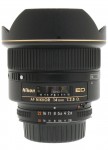Sigma 14mm F/3.5 ZEN Type 1
Ultra-wide angle prime lens • Film era • Discontinued
Model history (2)
| ■Sigma 14mm F/3.5 ZEN Type 1 | A | 13 - 11 | 0.18m | -- | 1990 ● | |
| ■Sigma 14mm F/3.5 ZEN Type 2 | A | 13 - 11 | 0.18m | -- | 1992 ● | |
Specification
| Optical design: | |
| 35mm full frame | |
| 14mm | |
| F/3.5 | |
| 13 elements in 11 groups | |
| Canon EF [44mm] | |
| Minolta/Sony A [44.5mm] | |
| Nikon F [46.5mm] | |
| Sigma SA [44mm] | |
| 114.2° (35mm full frame) | |
| On Canon EOS APS-C [1.59x] cameras: | |
35mm equivalent focal length: | 22.3mm (in terms of field of view) |
35mm equivalent speed: | F/5.6 (in terms of depth of field) |
Diagonal angle of view: | 88.3° |
| On Sony DSLR-A/SLT-A APS-C [1.53x] cameras: | |
35mm equivalent focal length: | 21.4mm (in terms of field of view) |
35mm equivalent speed: | F/5.4 (in terms of depth of field) |
Diagonal angle of view: | 90.5° |
| On Nikon D APS-C [1.53x] cameras: | |
35mm equivalent focal length: | 21.4mm (in terms of field of view) |
35mm equivalent speed: | F/5.4 (in terms of depth of field) |
Diagonal angle of view: | 90.5° |
| On Sigma SD APS-C [1.74x] cameras: | |
35mm equivalent focal length: | 24.4mm (in terms of field of view) |
35mm equivalent speed: | F/6.1 (in terms of depth of field) |
Diagonal angle of view: | 83.2° |
| Diaphragm mechanism: | |
Diaphragm type: | Automatic |
Aperture control: | None; the aperture is controlled from the camera (Canon EF, Minolta/Sony A, Sigma SA) |
| Aperture ring (Manual settings + Auto Exposure setting) (Nikon F) | |
| 6 (six) | |
| Focusing: | |
| 0.18m | |
| 1:6.1 | |
Focusing modes: | Autofocus (AF), Manual focus (M) |
Autofocus motor: | Micromotor (Canon EF, Sigma SA) |
| In-camera motor (Nikon F, Minolta/Sony A) | |
Manual focus control: | Focusing ring |
Focus mode selector: | AF - M (Canon EF, Sigma SA) |
| None; focusing mode is set from the camera (Nikon F, Minolta/Sony A) | |
Manual focus override in autofocus mode: | - |
| Optical Stabilizer (OS): | |
| - | |
| Physical characteristics: | |
| 440g (Nikon F) | |
| ⌀75×68.5mm (Nikon F) | |
| Accessories: | |
| Removable front filters are not accepted | |
Additional features: | Rear gelatin filter holder |
| Built-in petal-shaped | |
| <No data> |
Source of data
- Manufacturer's technical data.
Manufacturer description
The world's shortest focal length non-fish-eye AF lens, the 14mm is no slouch on features: a full 114° angle of view, 13 elements in 11 groups, focusing down to a scant 7 inches, built-in lens hood, and a gelatin filter holder behind the floating rear lens element. On top of all that, this is the most compact lens in its class.
From the American Photo magazine (January/February 1991)
Sigma has unveiled an AF 14mm f/3.5 rectilinear wide-angle lens - the widest autofocus offering to date - at a price many times lower than its rectilinear competition. The new optic has a distortion-free 114-degree field of view and is available in manual and AF mounts for Canon, Minolta, Nikon, and Pentax cameras.
From the American Photo magazine (March/April 1992)
Sigma's new 14mm f/3.5 features the widest angle of view available in a rectilinear AF lens. Its design eliminates barrel distortion, while a floating element optimizes sharpness throughout its focusing range - which begins at a mere seven inches.
Notes
- The autofocus will not be available with Nikon D40, D40X, D60, D3000-D3500, D5000-D5600 digital SLR cameras.
- Sigma had to reverse engineer the communication protocol of the Canon EF mount to produce a version of this lens for Canon EOS 35mm film SLR cameras. As a consequence, this lens may not work properly with Canon EOS cameras (both film and digital) due to compatibility issues.
Frequently asked questions
What does the Sigma lens designation "ZEN" mean?
It means that the lens has a ZEN finish. ZEN is an acronym for Zeitgeist ("the spirit of the times"), Enhancement, and Nonglare. This nonreflective urethane resin finish was introduced around 1989 and replaced the old-style, painted satin-black finish. Sigma claimed it to be hard, strong, antichemical, nonslip, antiglare, and scratch-resistant, however, it actually had a tendency to peel off and become sticky as it aged.
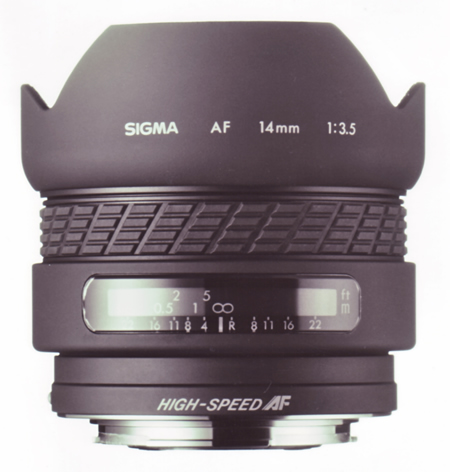
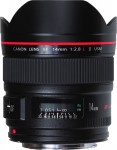

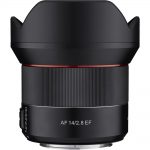
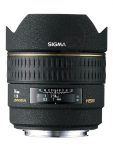

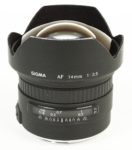
![Tamron SP AF 14mm F/2.8 Aspherical [IF] 69E](https://lens-db.com/wp-content/uploads/2012/07/tamron_14_f2-8-121x150.jpg)

